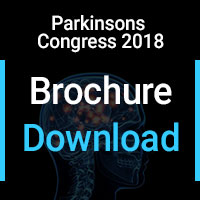
Farnaz Nikbakht
Iran University of Medical Sciences, Iran
Title: Anticonvulsant and antiepileptogenic effects of metformin
Biography
Biography: Farnaz Nikbakht
Abstract
Background: Current medications for epilepsy are just anticonvulsive agents and cannot protect against epileptogenic processes. On the other hand, theses anticonvulsive drugs are ineffective for one-third of epilepsy patients. Regarding these limitations, there is an urgent and growing need for a new drug to process both properties. Metformin, a common antidiabetic drug, has been shown to act as an anticonvulsive drug in some experimental models. However, the antiepileptic properties of metformin are not yet clear.
Materials & Methods: Sixty male Wistar rats are divided randomly into four groups: control, kainate (KA group), metformin+KA group and metformin group. Temporal lobe epilepsy was induced by intracerebroventricular (ICV) microinjection of 0.5 µg KA. Metformin was orally administered, starting two weeks before epilepsy induction. Following epilepsy induction, animals were monitored for behavioral seizure severity. Epileptogenesis was assessed by evaluating four factors: Hippocampal neuronal loss and neurodegeneration using Nissl and Fluoro Jade B(5 days after surgery); Neurogenesis using BrdU (5 days after surgery); Mossy Fiber sprouting, using Timm staining (30 days after surgery) and; EEG (30 days after surgery).
Results: Metformin as an anticonvulsant drug: the latency to seizure and the seizure severity were both reduced significantly, following metformin treatment (P<0.001). Metformin as antiepileptic drug: According to the Nissl and Fluoro-Jade B staining, the best protected areas in the hippocampus after metformin administration were CA3 and hilus (P<0.00). Behavioral EEG monitoring revealed that metformin-treated rats displayed spontaneous seizures at lower frequencies compared with epilepsy group. Metformin alone increased the neurogenesis which was even greater than Ka-induced neurogenesis. However, metformin-treated rats after epilepsy showed the immigration of new neurons to the hilar and CA3 areas. Metformin also reduced significantly mossy fiber sprouting.
Conclusion: Altogether we conclude that metformin acts not only as an anticonvulsant but an antiepileptogenic drug.

